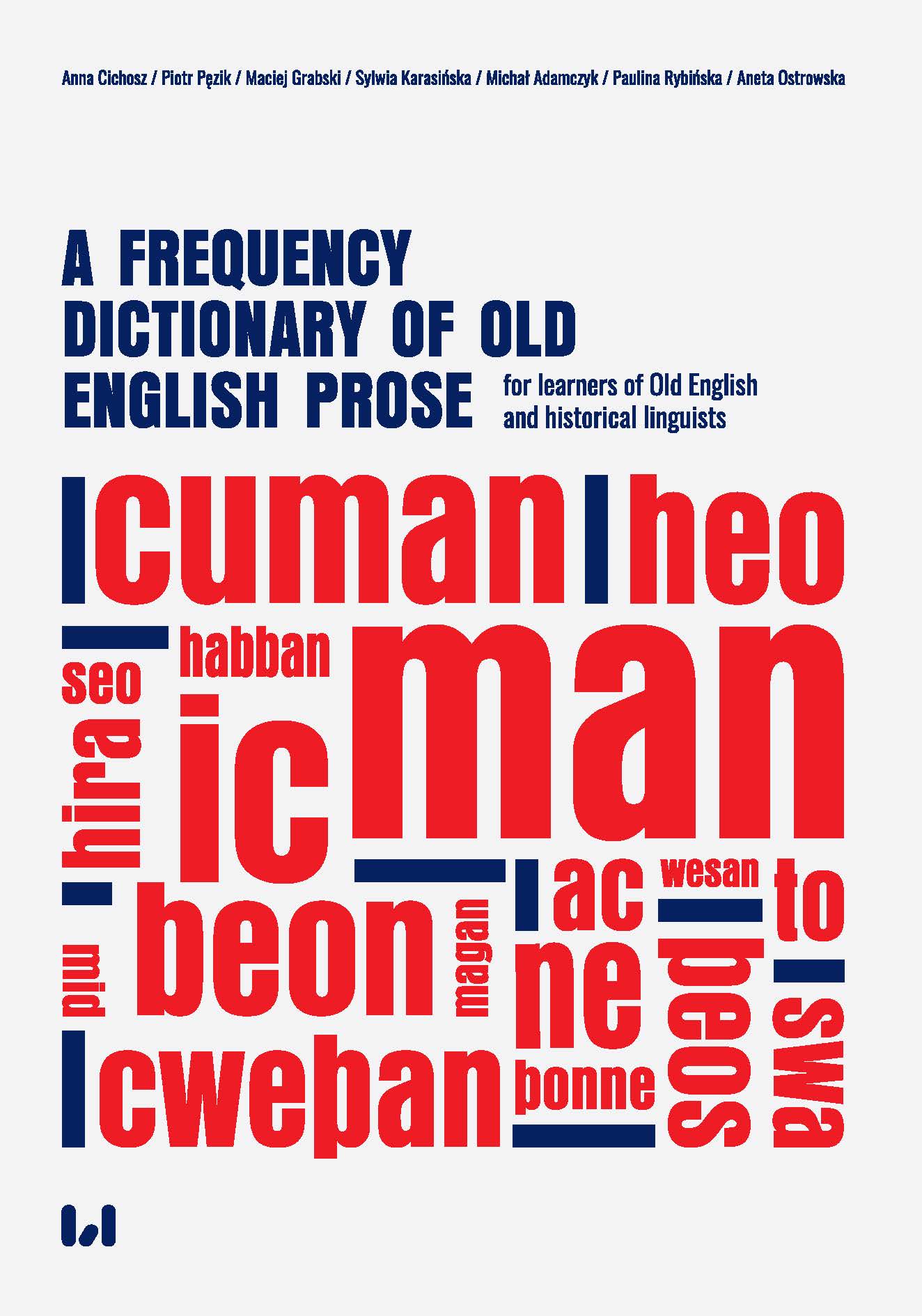A frequency dictionary of Old English prose for learners of Old English and historical linguists
A frequency dictionary of Old English prose for learners of Old English and historical linguists
Author(s): Anna Cichosz, Piotr Pęzik, Maciej Grabski, Sylwia Karasińska, Michał Adamczyk, Paulina Rybińska, Aneta Ostrowska
Subject(s): Language studies, Language and Literature Studies
Published by: Wydawnictwo Uniwersytetu Łódzkiego
Keywords: Old English; historical linguists
Summary/Abstract: A Frequency Dictionary of Old English Prose is a list of Old English words arranged according to their frequency, covering the whole York–Toronto–Helsinki Parsed Corpus of Old English Prose (Taylor et al. 2003), i.e. an electronic collection of all prose texts written in Old English. Thus, if you want to get a quick insight into a prose text written in Old English, you should start your study with the first entries. The dictionary includes all the words which occur at least 25 times in the corpus (over 2,700 entries altogether). Each lexical item is accompanied by its part of speech classification, translation into Modem English, an authentic example from the corpus (carefully handpicked to include the most basic words and thus be understandable even to beginners), the absolute frequency of the word in the corpus and the number of texts where it appears at least once.*The dictionary will prove an invaluable aid to learners of Old English. In addition to the basic list of lemmas in order of frequency, it highlights the distribution of lemmas within a number of exemplar texts, demonstrating in a striking way the value of learning lemmas in order of frequency. The frequency list is also interspersed with useful tables listing the most frequent lemmas within the major grammatical categories (pronouns, adjectives, verbs, etc.), but also quite a number of semantic categories, such as animals, body parts, temporal expressions, etc., which could potentially reveal insights into the Anglo-Saxon world. While primarily aimed at learners, the dictionary, particularly in conjunction with the online morphological and collocation dictionaries produced by the same team (http://varioe.pelcra.pl), will add to the growing number of excellent resources now available to support research by scholars of Old English prose.Ann Taylor, co-creator of the YCOE corpus, University of York (UK)A Frequency Dictionary of Old English Prose and its online sister tools, the morphological dictionary and the collocation dictionary, are much welcome resources for research and teaching. The frequency dictionary is a very useful guide for students of Old English who want to increase their vocabulary in a targeted way, and it provides an excellent overview of the Old English lexicon in general. Students can also have fun writing papers and theses on the basis of the resources, for example by identifying items of interest in the frequency dictionary and then searching for patterns in the collocation dictionary. The dictionary may also serve as an inspiration and a time-saving point of departure for research projects. It is very encouraging for the field that new resources are being created ta serve the community of Old English scholars.Kristin Bech, professor of English linguistics, University of Oslo (Norway)
- E-ISBN-13: 978-83-8220-900-6
- Print-ISBN-13: 978-83-8220-899-3
- Page Count: 282
- Publication Year: 2022
- Language: English
- eBook-PDF
- Table of Content

